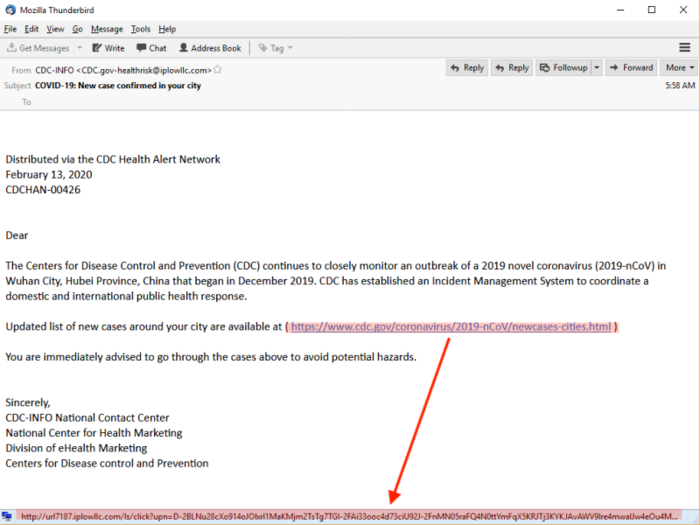
In this scam documented by Trustwave, the scammer purports to be from the CDC, but uses an email from a domain other than cdc.gov and includes misleading links that lead to a different site when clicked.

The malicious link in this scam directs users to a fake Microsoft Outlook login screen to steal their credentials — the unfamiliar URL is a tell.

In this case, when the misleading URL is copied and pasted from the email instead of clicked, it shows that the page doesn't actually exist.

Scammers highlight the language of emergencies to make victims act more quickly. The WHO has urged people to resist giving in to panic and to think twice about whether an email looks legitimate. If the information is supposedly public, there's no reason to submit login credentials in order to see it.

Don't panic if you believe you've already given your login credentials to a fraudster — change all your passwords to online accounts now, and set up multifactor authentication whenever possible.
 Internet of Things (IoT) Applications
Internet of Things (IoT) Applications
 10 Ultimate road trip routes in India for 2024
10 Ultimate road trip routes in India for 2024
 Global stocks rally even as Sensex, Nifty fall sharply on Friday
Global stocks rally even as Sensex, Nifty fall sharply on Friday

Copyright © 2024. Times Internet Limited. All rights reserved.For reprint rights. Times Syndication Service.